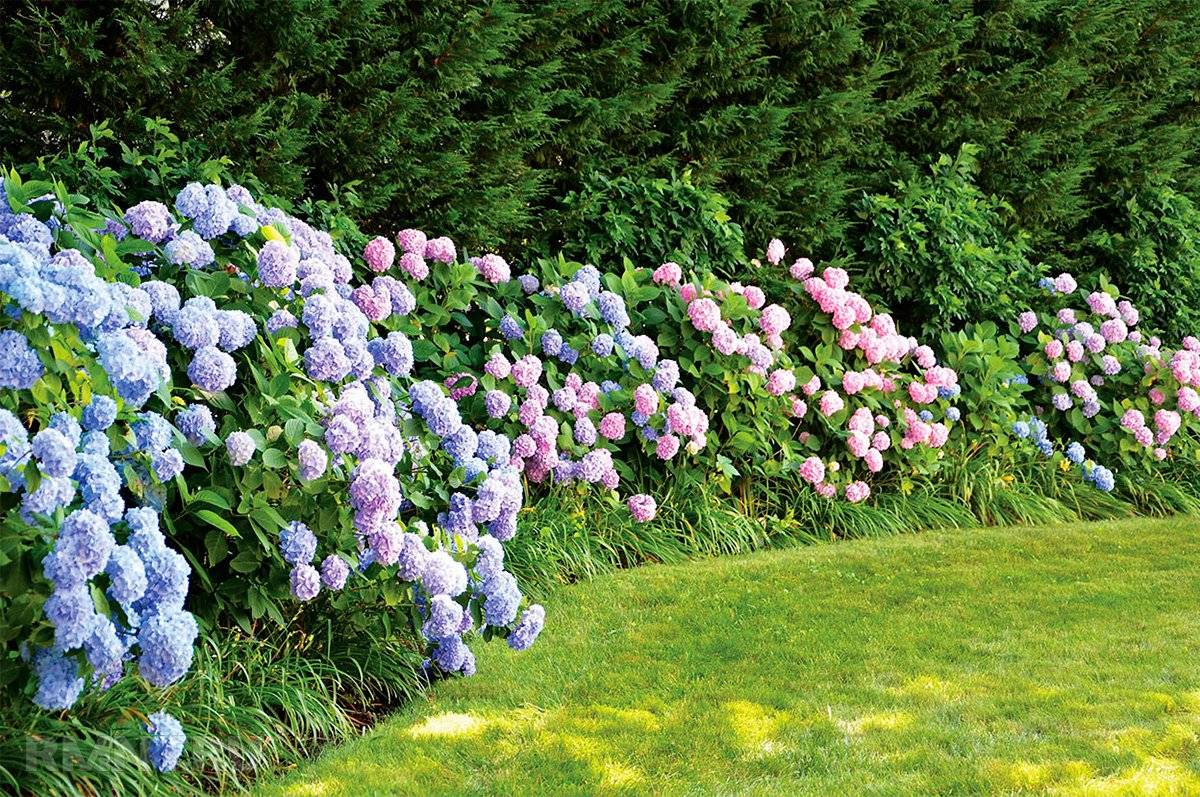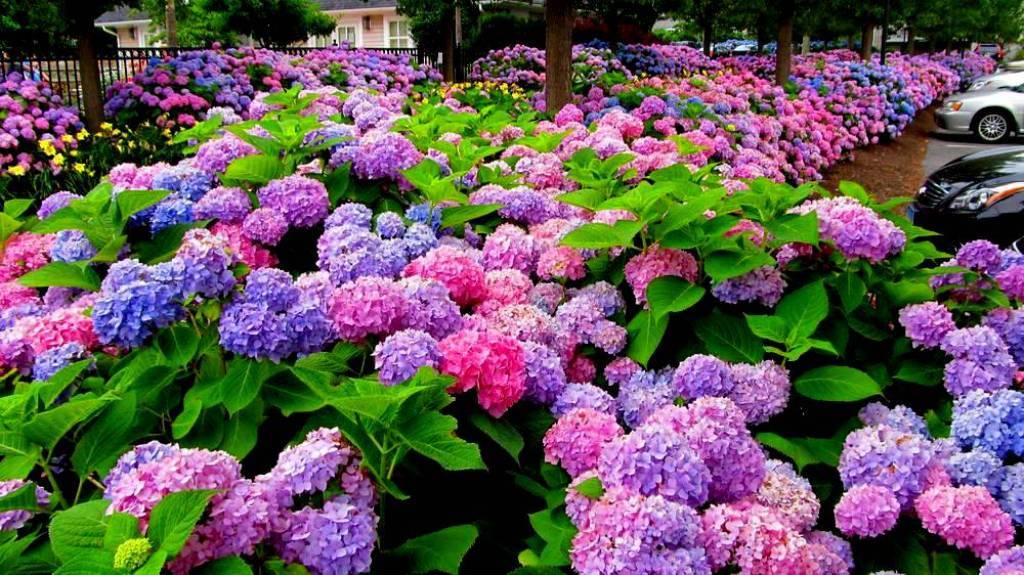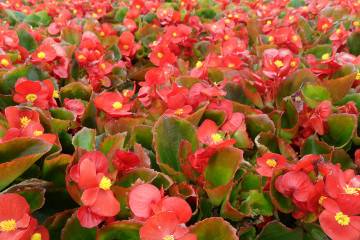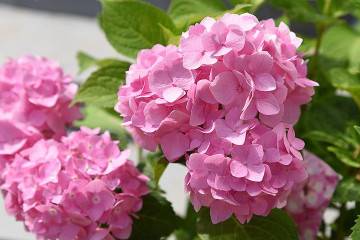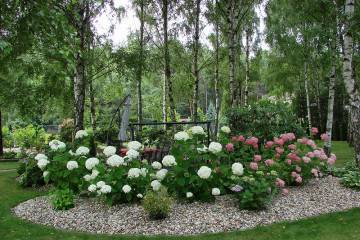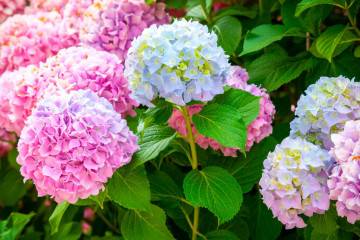What year does hydrangea bloom after planting
Content:
Hydrangea is often used to decorate flower beds and lawns in the private sector. This plant is quite bright and attractive. But most inexperienced gardeners sometimes have a question: what year does the hydrangea bloom after planting, and how difficult it needs to be.
This article covers all the rules for planting and caring for a garden plant so that it will delight its owners with an attractive appearance.
What year does hydrangea bloom after planting
As a species, hydrangea can be represented in several forms:
- a shrub that forms a fairly spreading shape, up to 2 m high;
- undersized form of a tree, fluctuating in height from 2 to 2.5 m;
- liana-like shape, which is able to drive out the main branch 30 m long.
On their backyards, gardeners prefer to grow a deciduous form of a plant in the form of a bush, although evergreen variants of hydrangea exist in nature.
The leaves of the shrub form can be very different in shape - oval, elongated, have a jagged edge or brightly traced veins.
The inflorescences are large enough, and in shape they can be:
- spherical;
- elongated;
- corymbose;
- fertile.
As for the color, it can be very diverse: from white to deep purple, monochromatic or tinted (when the color changes as the buds bloom).
In addition, many gardeners are also worried about this moment: for what year does the hydrangea bloom after planting the cuttings?
It is worth noting that if the hydrangea is planted in the autumn, then in most varieties the inflorescences will begin to form next summer, that is, in fact, when the plant is not yet 1 year old.
But there are other varieties that take several years to release their first buds.
Flowering calendar of garden hydrangea varieties
It is not difficult to grow a hydrangea, but it is important to choose the variety that suits each case, taking into account its flowering period.
So, for example, the tree variety is characterized by cold resistance and lush, massive flowering, which lasts from June to the end of September.
The panicle hydrangea will only be able to bloom in the fourth year after it has been planted. As for the duration of flowering, this plant will bloom in July and will fade by the end of October. There are a wide variety of varieties of panicle hydrangea, which differ in different colors of flowers.
The large-leaved hydrangea has a short flowering period, which lasts about a month (approximately from July to August).
The serrate subspecies has flowers of a white or blue tint. It blooms for about 2-3 months, depending on the conditions.
Radiant hydrangea is distinguished by its snow-white flowers, which will delight the owner of the garden for 2 to 3 months.
The oak-leaved subspecies has snow-white formed inflorescences that change their color gradually, first to pink, and then to a deep purple color.
Why hydrangea does not bloom
There are several reasons why a plant does not bloom, and most of them depend on the variety:
- so, for example, in hydrangea paniculate buds during wintering, they can simply freeze over, so in the current summer season you will not have to wait for color. Also, the lack of panicles can be caused by an unsuitable soil composition;
- large-leaved - can also poorly survive the winter, which will negatively affect the formation of color. It should be noted that the plant throws out buds only on last year's branches, so pruning must be done very carefully so as not to rid yourself of the beautiful appearance of the flowering bush;
- tree hydrangea, such as the Anabel variety, can also have trouble blooming. In addition to the standard freezing, which is inherent in all subspecies of this plant, the reason may be improper watering. If the soil is too dry, then the bush will develop very slowly and will not throw out the buds.
Also common to all species can be causes such as diseases and various types of infections. Fungus, powdery mildew or gray rot - have a very negative effect on the bush, including its flowering.
Necessary conditions for hydrangea flowering
Many inexperienced gardeners do not know where to plant hydrangea: in the shade or in the sun. This is a very important parameter on which a lot depends.
Hydrangea loves well-lit areas, open, but without drafts. At the same time, if direct sunlight falls on the plant for a long period of time, this will negatively affect the appearance of the bush.
It is also necessary to select a site where the soil will meet the requirements. It should be slightly acidic and not heavy. The plant tolerates clay soils very poorly. If the land does not match, then you will have to bring it to the desired parameters, by adding certain purchased factory microelements, a small amount of sand and peat.
Common mistakes when planting hydrangeas and how to avoid them
Not everyone knows how and where to plant a hydrangea: in the shade or in the sun, so that it gives a lush color.
If such a beauty grows in the garden, but the problem is that she does not bloom, then she was not provided with the appropriate conditions. Most likely, the place is too shady for her. The fact is that the bush is quite sensitive to the amount of lighting. If the sun is not enough, then the kidney simply does not form.
There is another common mistake that inexperienced hobby gardeners make. They place other garden crops too close to hydrangeas. As a result, intertwining, root systems do not allow each other to fully develop. Therefore, it is necessary to grow it in order for it to bloom at a certain distance from other neighbors.
Useful tips and some secrets of caring for hydrangea paniculata
First of all, the gardener needs to know if the hydrangea loves the sun or shade. In this case, the amount of sunlight should be plentiful, but with a little shading during the period when the sun is at its zenith. These are the most suitable conditions for the garden hydrangea, so that the flowering is abundant and long-lasting.
If the plant still begins to bloom, but forms rather small brushes or spheres, then the reason may lie in the fact that the soil lacks minerals that provide nutrition to the plant. But you need to be careful with nitrogenous fertilizers, since they affect the amount of green mass formed, and, on the contrary, have a negative effect on the formation of flowers.With hydrangea, you need to adhere to the principle - it is better not to supplement than to overdo it in the introduction of nutrients, whether they are mineral or organic.
It is also necessary to adhere to the recommended pruning scheme. This will help not only to form an outwardly attractive bush, but also contribute to the formation of a large number of flowers.
Where to plant hydrangea: in the shade or in the sun
Since the capricious and contradictory hydrangea does not tolerate excess moisture in the soil, you should choose a good, flat area that slightly rises above the general soil level. It is also necessary to consider that hydrangea loves the sun, but not its excess. Therefore, you need to try to ensure that the young plant, after sowing or planting by cuttings, receives maximum illumination in the morning and evening hours.
If many other plants are planted on the site, then the question may arise as to whether the hydrangea grows in the shade. Experienced gardeners answer that the bush, of course, will increase in size, but it will bloom either very poorly, or completely discard or not form a bud.
Is it possible to plant hydrangea in the sun
In addition to the fact that hydrangea does not like intense shade or areas that are semi-shaded throughout the daylight hours, it tolerates the sun quite well.
You can plant cuttings of a young plant along a retaining wall or fence - this way there will be a lot of light and direct sun during one half of the day, while shade will be provided during the second. These are the most optimal conditions for her.
Features of the autumn planting of hydrangeas in the Moscow region in Siberia in the Urals in the Krasnodar Territory
Growing a plant in central Russia will require preliminary preparation. The seedling should be placed in a slightly shaded area. If you provide reliable protection for the winter, then the next summer will be abundant flowering.
In the southern regions, including the Krasnodar Territory, it is necessary to intensively shade the hydrangea during the daytime sun. Therefore, it is necessary to carefully select a landing site.
Thus, it becomes clear whether it is possible to plant a hydrangea in the sun, regardless of its type. If you provide her with proper care, then she will delight with a beautiful appearance and will become a real decoration of the garden.
Video



